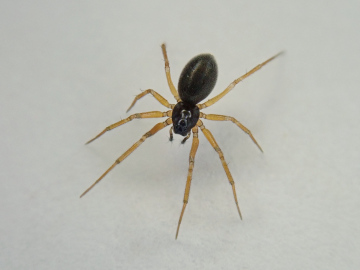Summary for Agyneta rurestris (Araneae)
previous species | next species
National Distribution
Terms of Use. Double-click on map to go to region

Explore Regional Distribution
Please log on and add a note on this species
About this species
Recorded altitude range0m to 1060m
Species text
DistributionThe species is widespread in much of Britain, becoming scattered in the west and north. It is widespread in western and central Europe.
Habitat and ecology
A central and northern European species abundant in disturbed sparsely vegetated habitats. M. rurestris is one of the commonest spiders living on British grasslands and cultivated land. It builds a small horizontal sheet web (c. 30 cm2) over depressions in the soil or against stones, normally over bare ground but also amongst vegetation (Thornhill 1983). This spider is known for its super-colonising ability of pioneer habitats (e.g. Meijer 1977). In a Swiss experiment, it was found that there are two main phases of aerial dispersal: the first from July to early September and, the second from mid-October to mid-November (Blandenier & Fürst 1998). Although adults have been taken throughout the year, combined data from Thornhill (1983) and Bell (1999) suggest that that the peak of activity is between May and August, indicating the main copulation phase. The diet consists of Collembola, Homoptera and Thysanoptera (Sunderland et al. 1986).
Status
Common.
Original author of profile: J.R. Bell
Text based on Harvey, P.R., Nellist, D.R. & Telfer, M.G. (eds) 2002. Provisional atlas of British spiders (Arachnida, Araneae), Volumes 1 & 2. Huntingdon: Biological Records Centre. References
Adult Season
Habitats
background methodology
Recorded management for locations with Agyneta rurestris
Recorded substrate and hydrology for locations with Agyneta rurestris
Images
please log on and upload a new image for this speciesSee also A-Z Species Index - A-Z Picture Index - previous species | next species
